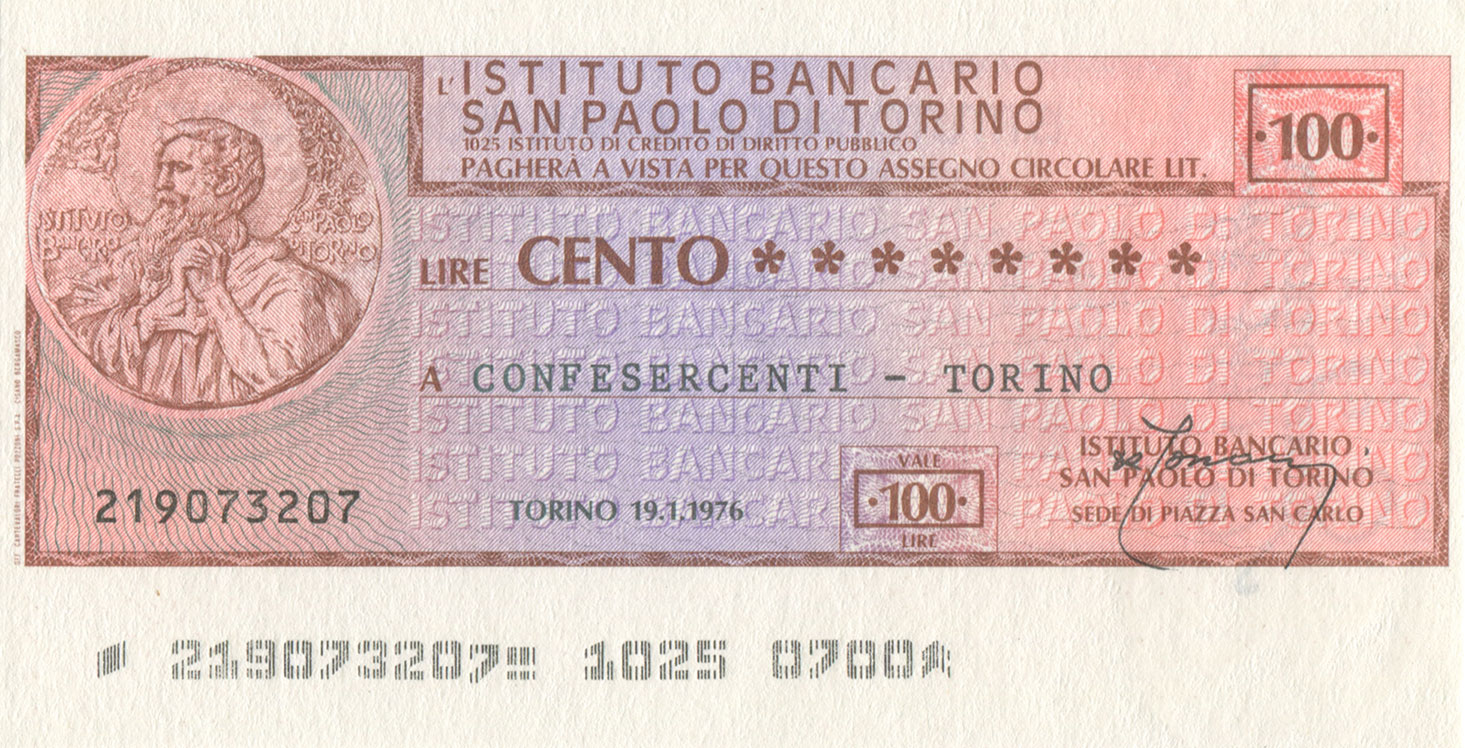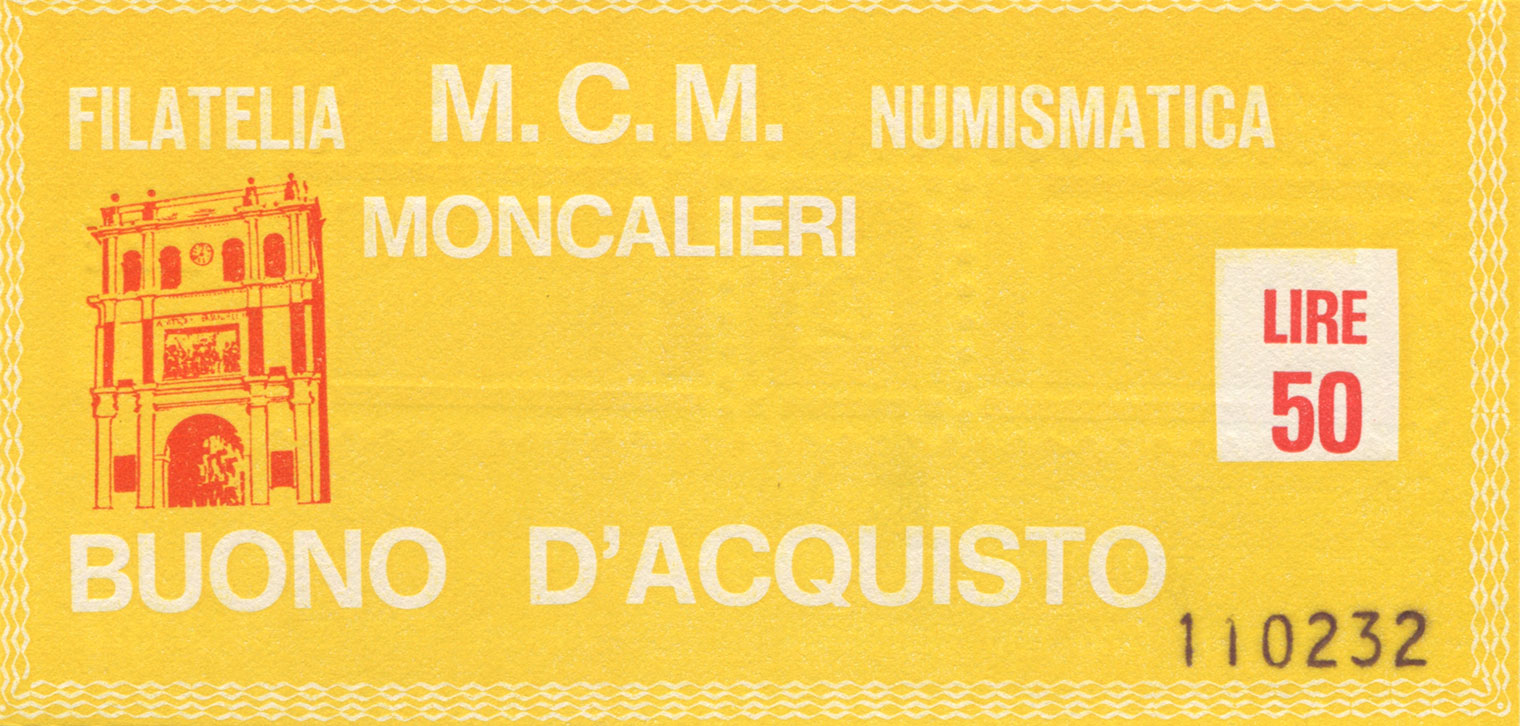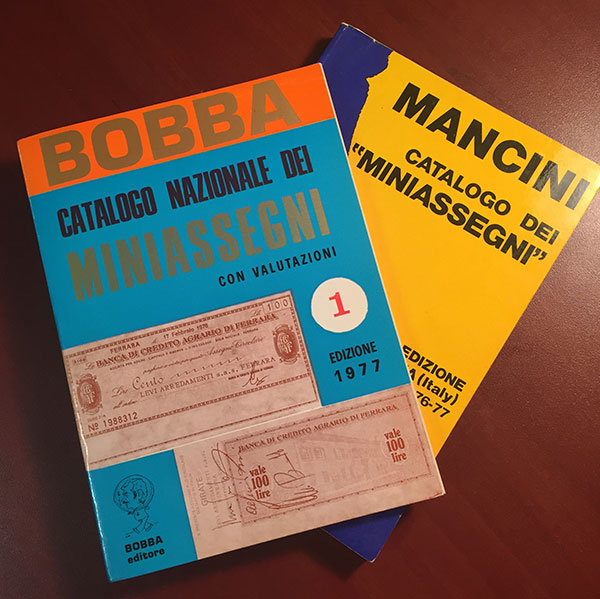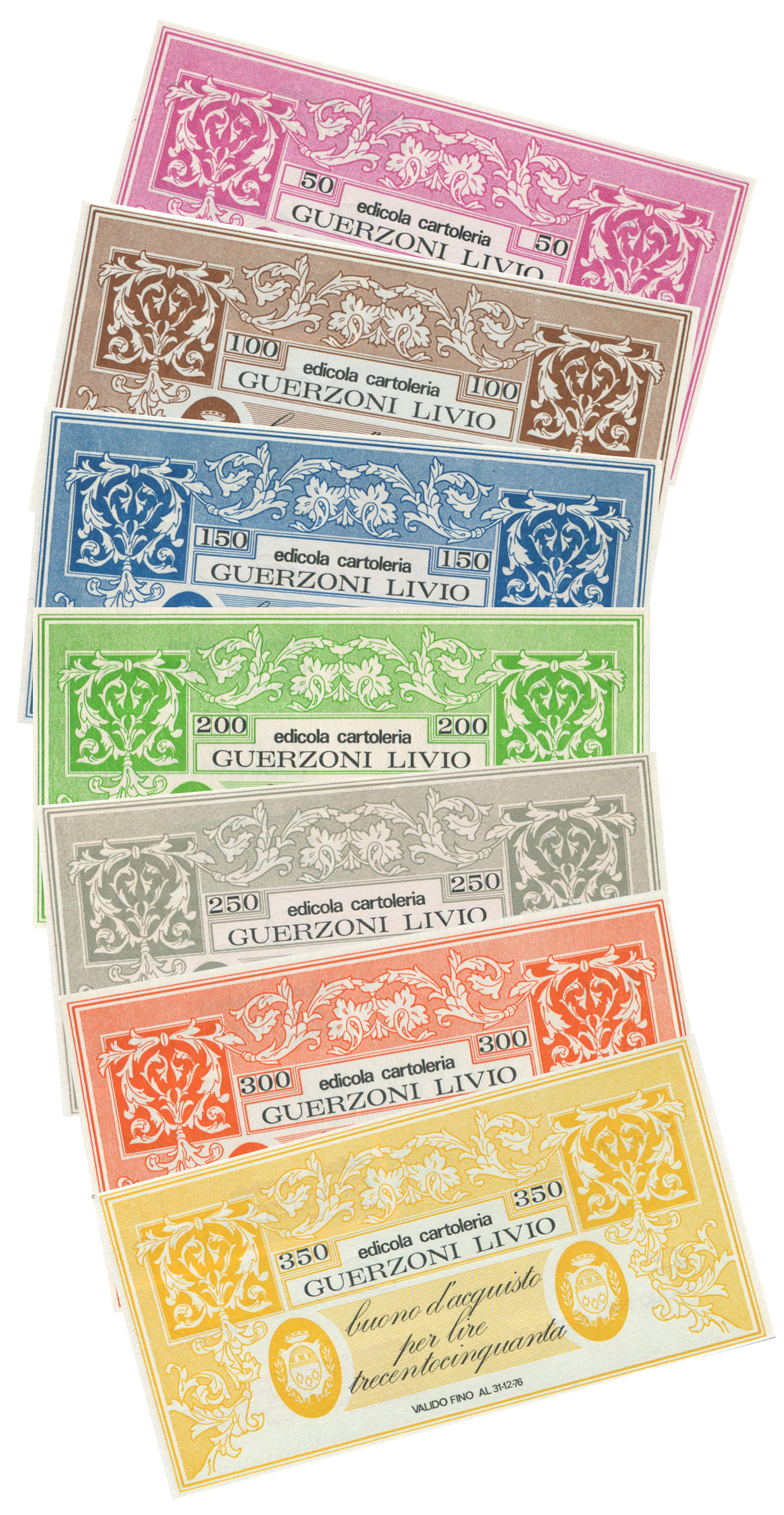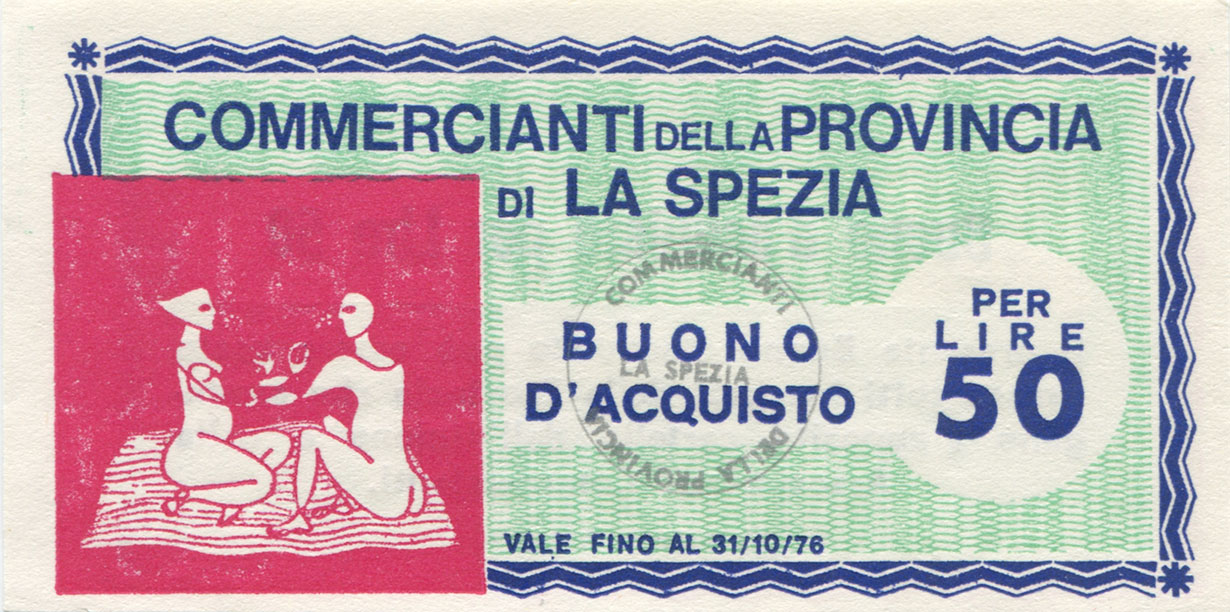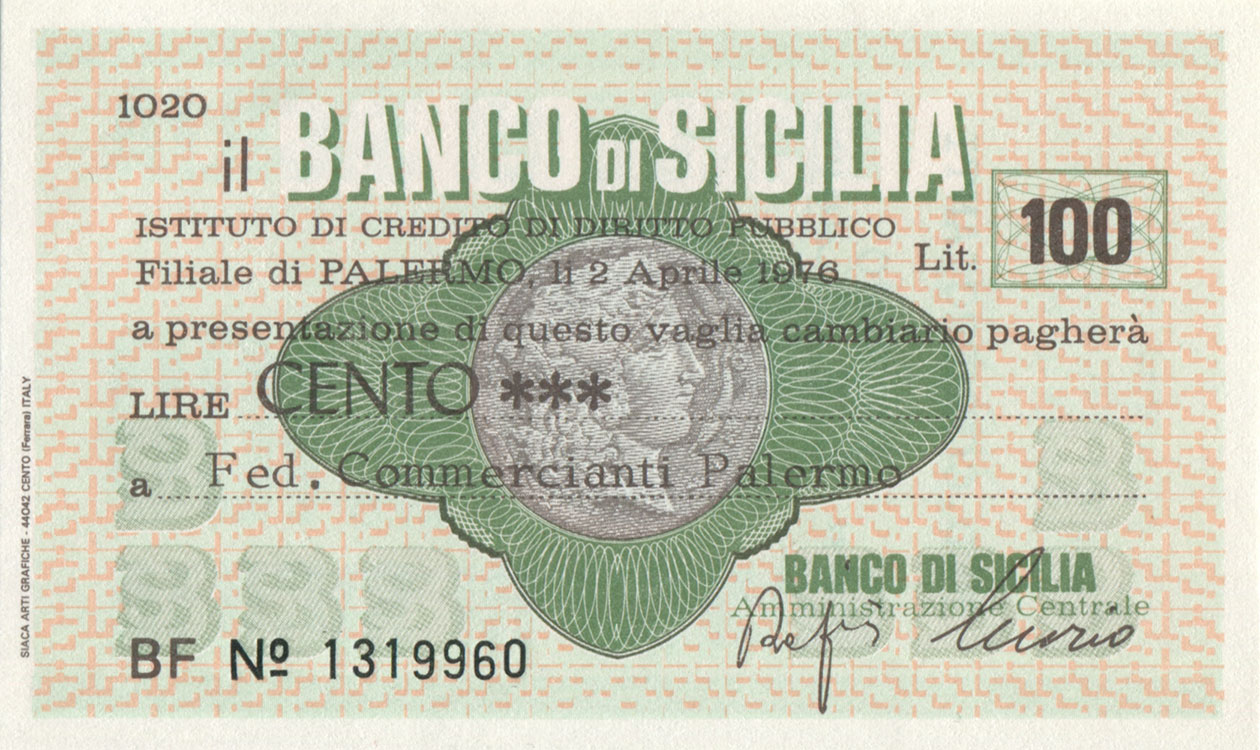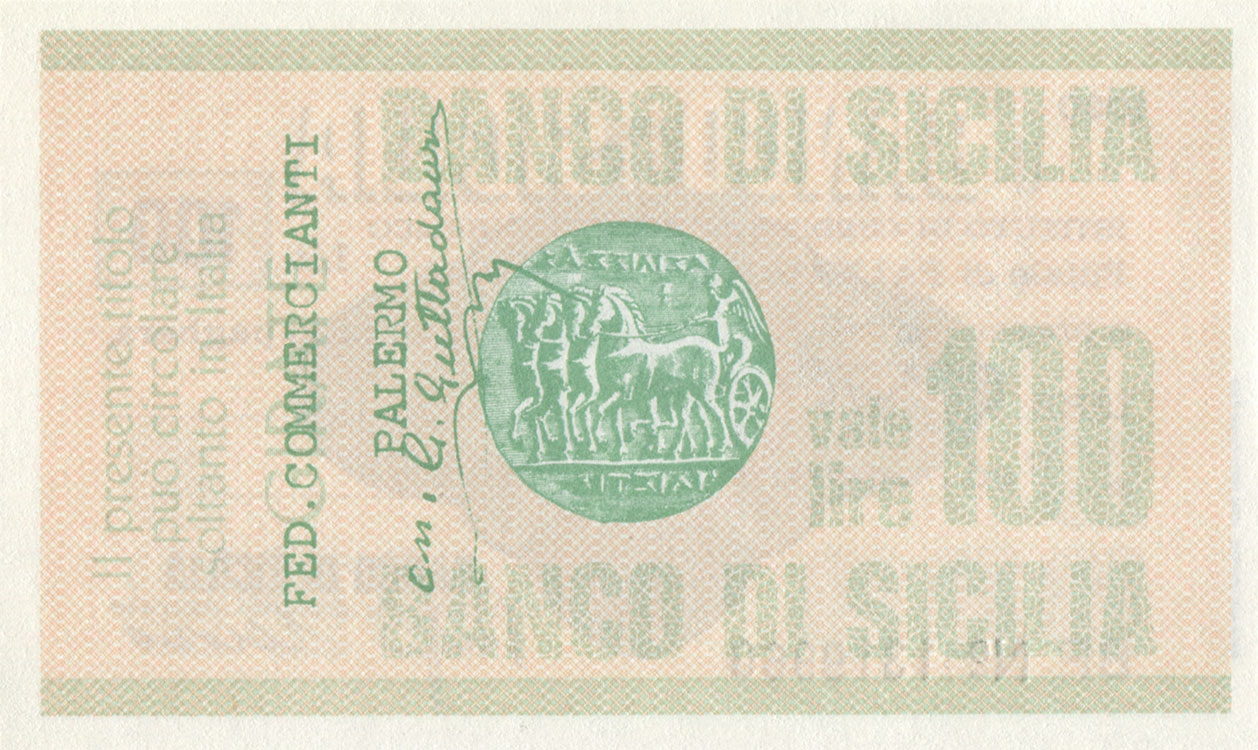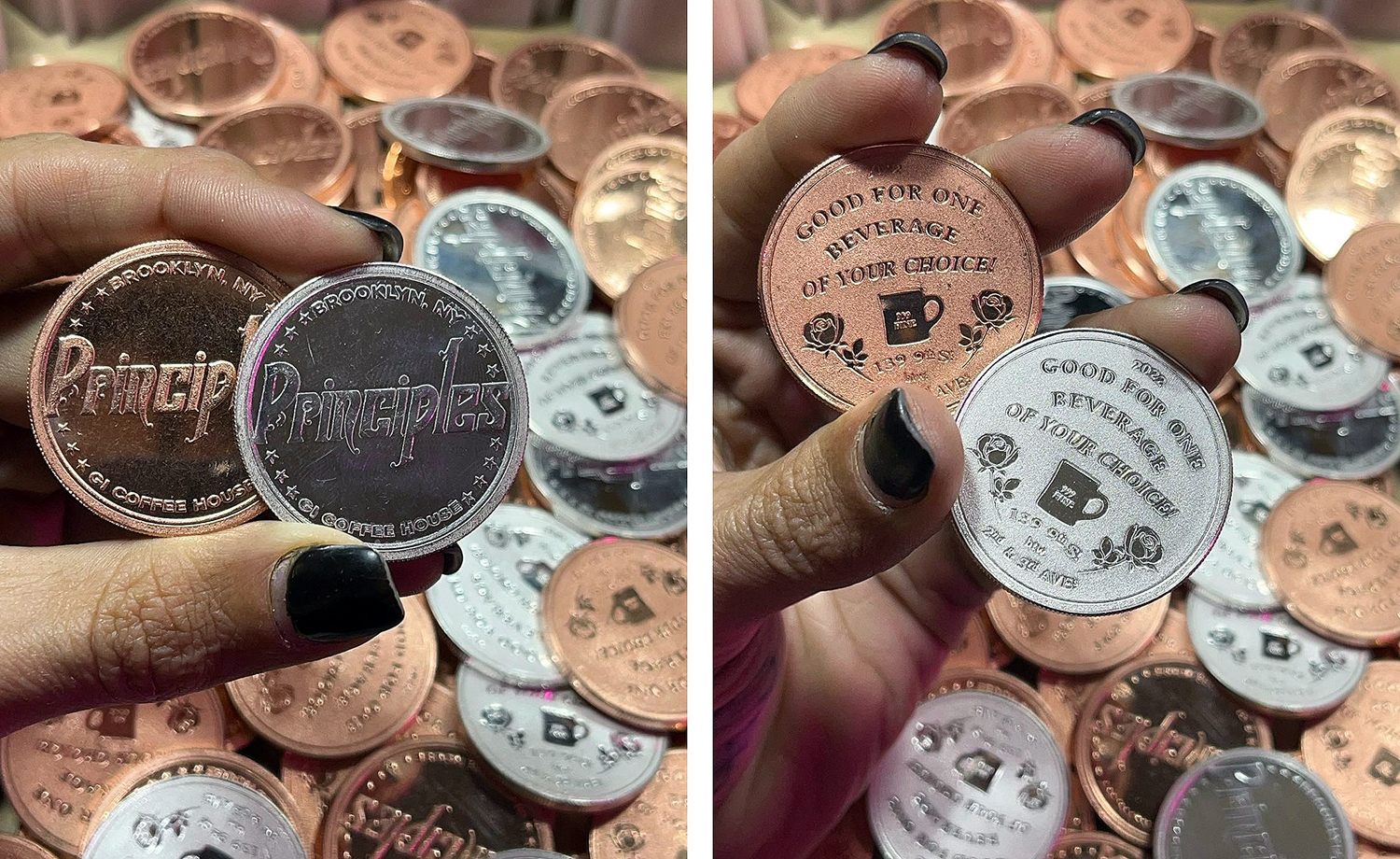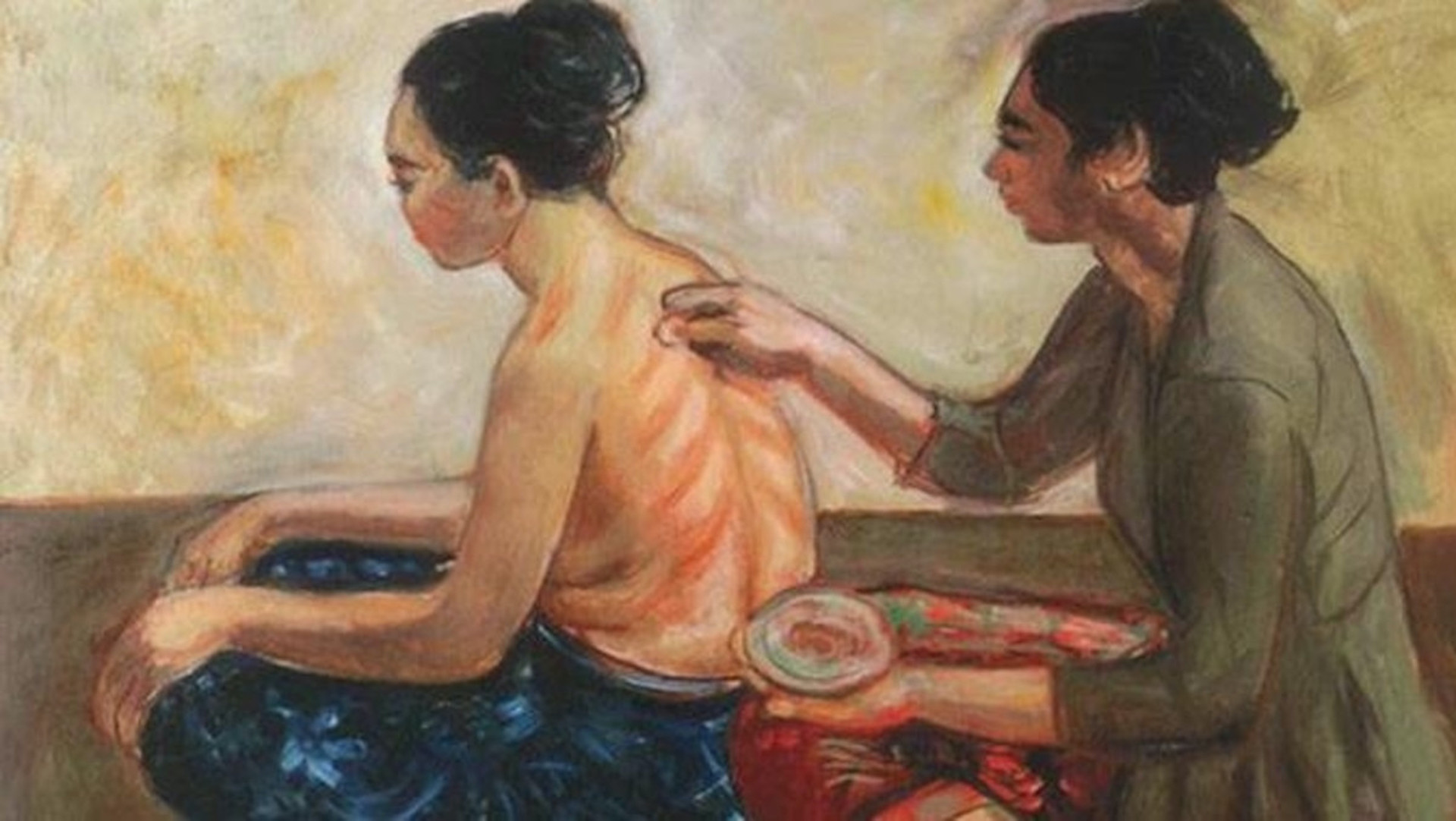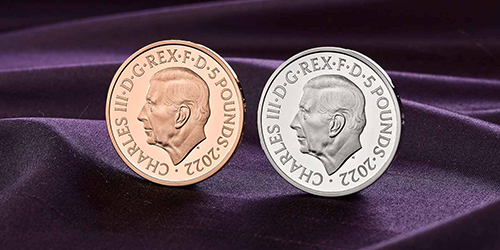Italian Emergency Money of the 1970s
By Taylor Hartley
Since last November I have been working on a project here at the ANS to catalogue a group of Italian miniassegni from the late 1970s that was donated by our late benefactor Sidney W. Harl in 2001. Miniassegni or “mini-checks” are coupons or promissory notes made to replace small-denomination coins during a shortage of 50 and 100 lira coins, which were the approximate equivalent of American nickels and dimes.
The shortage of 50 and 100 lira coins lasted from 1975 to 1979. Its causes are famously mythologized. Some said the coins were used as buttons in Japan, others that the shortage was caused by trade union strikes. In his book Europe, Europe, Hans Magnus Enzensberger suggests that it was actually caused because the Italian government abandoned their plans for a new mint and the old one simply could not produce enough coins to meet demand.
When the shortage of small-denomination coins began in 1975, vendors started by giving small items instead of change. Candy, grapes, stamps, phone tokens, and even chicken livers were given to customers when there was no way to make change. One café owner in Rome wrote handwritten notes for his customers as credit for their next order.
After the shortage stretched on for a while, stores began to issue little coupons or checks of their own that ranged from 50 to 350 lire. Then banks started issuing miniassegni that could be collected and then exchanged for larger bills.
The ANS collection mostly consists of the notes issued by banks, but they also have a number of “buoni d’acquisto,” the notes issued by shops. My favorite of these is one issued in 1976 by a stamp and coin shop in Moncalieri.
The miniassegni were almost instantly adored by collectors. During the shortage many catalogues were published to help collectors and to assign value to the rare ones.
At one point, coin dealers in Italy were selling more miniassegni than Roman coins. They even gained some popularity in the United States. Boys’ Life Magazine published a letter about them in their coin and stamp collecting section in March 1978. Collecting miniassegni was something of a craze, like tulips or Beanie Babies were in their time.
I can see why they were so popular. Their endless variety and bright colors make them intriguing and highly collectible. Some just look like small bank checks, but others, like these designed by the paper shop of Guerzoni Livio were colorful and beautiful.
Still more have a homemade charm to them, like this small one from La Spezia.
Some had local monuments on them, like the Navina Arch in Moncalieri. The miniassegni from the Bank of Sicily even hearken back to Sicily’s rich numismatic history with a picture of the famous coin of Arethusa surrounded by dolphins.
They are as friendly and fun as Monopoly money, but they were accepted as cash.
After their initial popularity during the coin shortage, the demand for miniassegni as collectibles dropped off. Their values dropped quickly after life returned to normal and there was once again enough change to go around. But they deserve some attention. I have had so much fun learning about the miniassegni through the process of cataloguing this collection. They are memories of an interesting period of recent Italian history when no one had change to spare, and everyone collected and spent little colorful slips of paper instead.

This guest post by our curatorial intern Taylor Hartley describes one of the projects she has been helping us with over the past several months.


